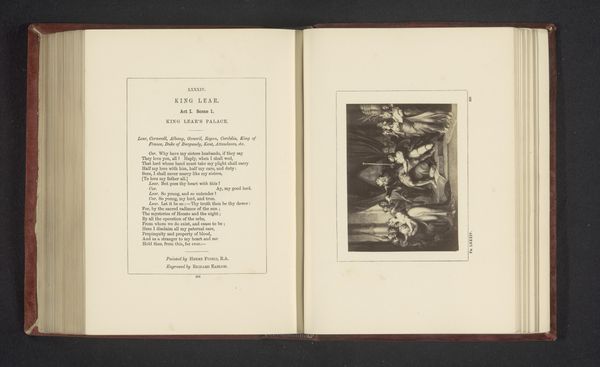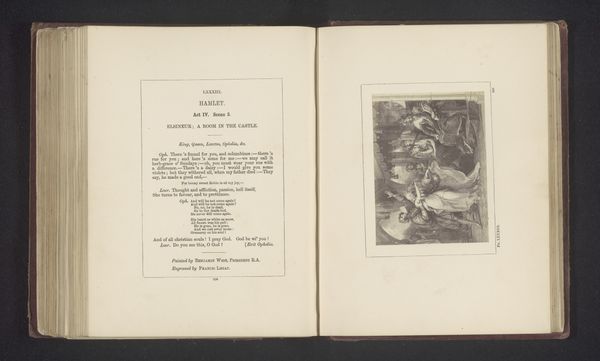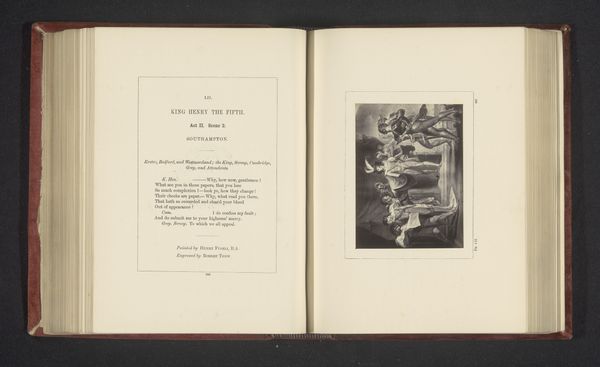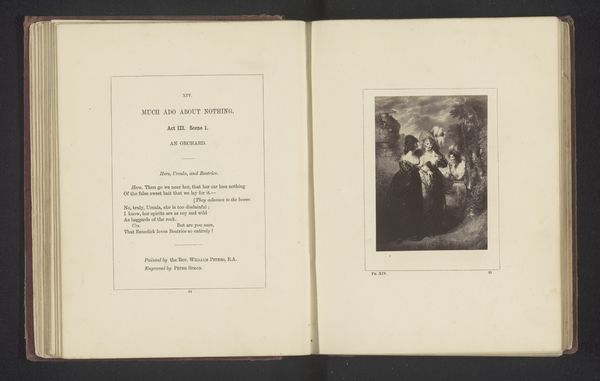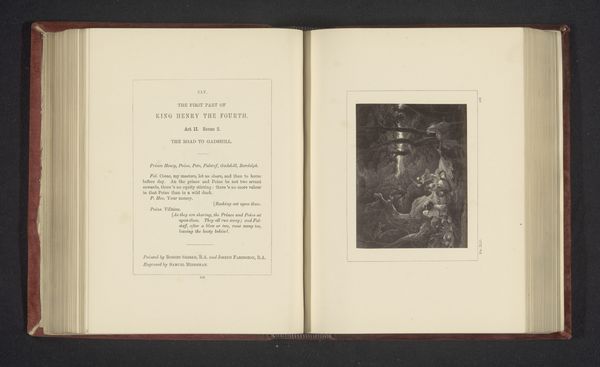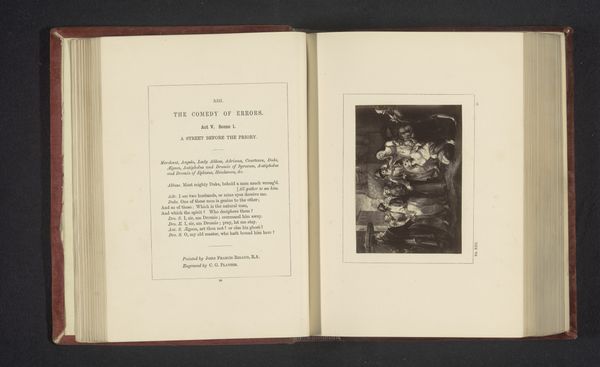
Fotoreproductie van een prent naar een schilderij door James Northcore, voorstellend een scene uit Romeo en Julia door William Shakespeare before 1867
0:00
0:00
Dimensions: height 75 mm, width 102 mm
Copyright: Rijks Museum: Open Domain
Curator: Ah, here we have a photo reproduction of an engraving, pre-1867, after a painting by James Northcote. It depicts that heart-wrenching scene from Romeo and Juliet in the Capulet's tomb. Editor: Bleak, isn't it? The composition feels like descending into the earth. Claustrophobic even – a stage for tragedy made tangible. Curator: Indeed. Northcote, known for his history paintings, really leans into the dramatic tension. What strikes me is how this print, a reproduction, makes such an emotionally charged painting available to a wider audience. Engravings allowed for mass dissemination, transforming a singular artwork into something almost democratic. Editor: That's interesting—democratization via reproduction. The labor involved in engraving is often overlooked, but someone painstakingly transferred that emotion onto a metal plate so it could be pressed again and again. There's a real tension there between art and industry. Curator: A fair point! And speaking of materiality, consider the choice of black and white. It amplifies the somber mood, doesn't it? Makes the romanticism almost… raw. Northcote uses light and shadow in a really clever way, focusing on the play of emotions rather than precise realism, and that carries through even in the reproductive print. Editor: The staging, with the single light source… feels a little theatrical, to be honest. Is it drawing our eye or obscuring something? I'm curious about who commissioned this and who was buying these prints back then. Was it about artistic appreciation, social cachet, or simply access to culture in a pre-photography world? The consumer’s hand lingers, I think. Curator: A little of all, perhaps. These reproductions certainly fed into the Victorian obsession with sentiment and narrative, playing into established romantic styles and emotional painting, whilst letting art spill outside of a painting. The theatre in the image itself really resonates, the artist aware that they were creating something to be consumed. Editor: Well, that's definitely given me something to ponder, a reminder that how and why art is distributed often says as much as the work itself. Curator: Absolutely. And hopefully, it inspires everyone else to look beyond the immediate image, and find themselves lost in its dark corners, just like those fateful lovers.
Comments
No comments
Be the first to comment and join the conversation on the ultimate creative platform.

